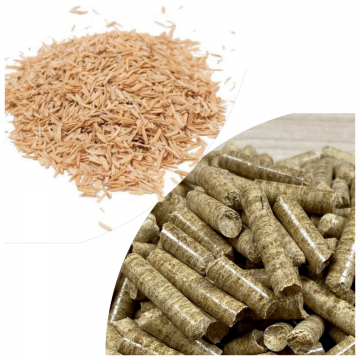Rice husk pellets
One of the widely available biofuels are rice husks, which could be pelletized.
We have researched Rice husk pellets in Spain, in the area of Valencia, where grows a lot of rice. Moisture content of these pellets was 8%, Ash content 12%, Sulphur 0,06%, Chlorine 0,22%, Nitrogen 0,47%, NCV was 16,4 GJ per mt. Mechanical durability of the pellets was quite low - 88%. Biggest problem with the rice husk is its high ash content and also high Chlorine. For example, only 0,07% of Chlorine is accepted in I2 grade wood pellets, whilst up to 0,22% Chlorine was detected in rice husk pellets.
High chlorine content in combination with high potassium content (alkaline media) may create slagging (sedimentation) of the ash on the inner walls of the boiler and its pipes and make its lifetime shorter. All this makes the use of rice husk pellets very limited in coal-fired power plants.
Adding to pellets white clay (kaolin) as an anti-slagging agent allows to counterreact the tendency of the ash becoming viscid and forming the clinker in alkaline media.
Totally another matter could be burning of rice husk pellets in biomass dedicated power plants.







